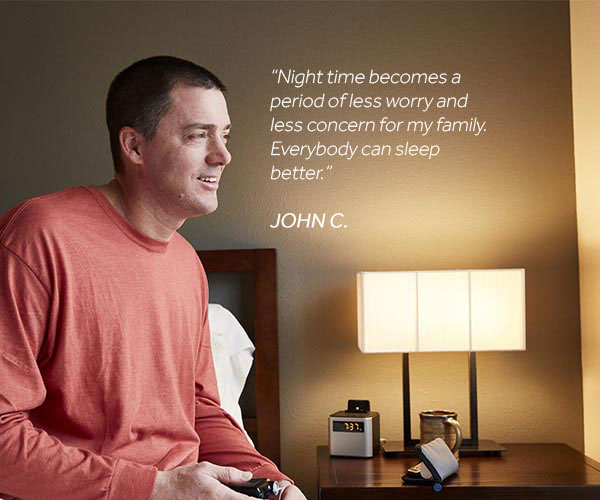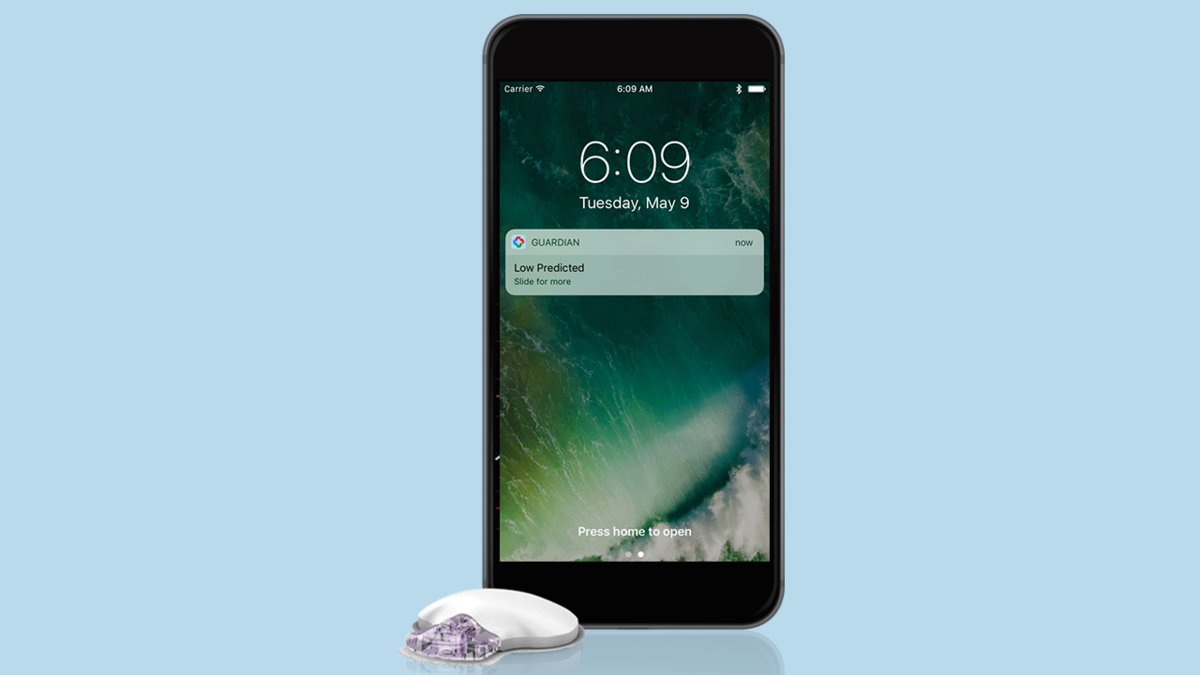WHAT IS CGM?
Continuous Glucose Monitoring is an advanced way for people living with diabetes to check glucose levels in real-time or monitor sugar levels over a period of time. By using a continuous glucose monitor, your CGM system will automatically receive glucose levels every 5 minutes allowing you to fingerstick less often. CGM can be used with or without an insulin pump.
What is Smart CGM?
Smart CGM predicts future high and low sensor glucose events up to 60 minutes in advance and provides access to additional algorithms and insights that can inform you of clinically relevant glucose patterns.†
BENEFITS OF CGM.
A blood glucose meter only provides a brief "snapshot" of your glucose level at a single moment in time. A CGM system gives you a greater view of your glucose trends. CGM can provide valuable information 1 at crucial points during the day, including before and during exercise, prior to driving, before test/exam-taking, and in the middle of the night.
An average of 72% Time in Range and 98% improved HbA1c versus MDI* as part of a CGM system2,4

94% of lows were detected using CGM3

The direction your glucose levels are going

Early notification of oncoming lows and highs throughout the day and night

Visibility of time spent high, low, and within a healthy glucose range of 3.9 – 10 mmol/L

Insights into how food, physical activity, medication and illness impacts your diabetes1
Medtronic’s (real-time) continuous glucose monitoring (CGM) products are indicated for use by people living with type one diabetes. Guardian™ Sensor 3 may be used as part of the Guardian™ Connect and MiniMed® 640G systems for ages 2 and up. Sensor is indicated for use on arm and abdomen. Guardian™ Sensor 3 may also be used as part of the MiniMed® 670G system for people living with type 1 diabetes age 7 and up. Sensor is indicated for use on abdomen only. Enlite™ Sensors are indicated for use with Guardian™ Connect, Paradigm™ VEO and MiniMed® 640G systems for people living with type 1 diabetes, age 7 and up. Sensor is indicated for use on abdomen, buttock and upper buttock.
IS CGM FOR ME?
Medtronic offers CGM systems for people living with type 1 diabetes that want better glucose control. CGM is especially beneficial for people who:4
- Aren't meeting their Time in Range or A1C goal2,4
- Have frequent low glucose levels
- Are unaware of their low blood sugars
- Want to reduce their A1C targets without increasing hypoglycaemic events (low blood glucose)
- Have widely variable blood sugar levels
- Are children or adolescents who are willing to use the device every day5

1 HOUR IS
LOST
Every day to managing lows4
10%
Of severe lows require
medical assistance5
74%
Change their insulin
dose due to fear of lows6
MINIMED 780G INSULIN PUMP SYSTEM

MiniMed 780G Insulin Pump and CGM System^
An insulin pump combined with a CGM can enable your pump to automatically2 adjust your basal (background) insulin every five minutes based on your CGM readings#.
MiniMed® 780G system includes our newest and most advanced CGM, the Guardian™ Sensor 3 and the Guardian™ Link 3 transmitter. It automatically monitors your glucose levels and adjusts the insulin delivery for you, 24/7. 1,2
^Components are sold separately. Automated insulin delivery is made possible through combining Medtronic insulin pump and continuous glucose monitoring technology.
1
Carlson, A.L. et al. 97-P- Safety and glycaemic outcomes of the MiniMed™ AHCL System
in subjects with T1D. 80th ADA International Conference, June 2020,
Chicago+E24
2 Collyns, O. et al. 199-OR- Improved glycaemic Outcomes with MiniMed™ AHCL
Delivery. 80th ADA International Conference, June 2020, Chicago
Guardian™ Connect SMART CGM

For people using insulin injections
The Guardian™ Connect CGM monitors your glucose levels day and night and alerts you of highs or lows before they happen. You can set alerts anywhere from 10 to 60 minutes, getting notified exactly when you want. The system includes a small sensor worn up to seven days and a slim, discreet Bluetooth® transmitter. They work together to send precise glucose readings automatically to your phone every five minutes.
Guardian™ Connect CGM has you covered — and looks ahead — so you can focus on living your life, instead of watching your glucose levels.
You may be interested in
- The dynamic resume feature is based on certain preset criteria: sensor glucose must be 1.1 mmol/l above the preset low limit and predicted to be 2.2mmol/l above within 30 minutes AND insulin must have been suspended for at least 30 minutes.
- Kaufman FR, et al. A pilot study of continuous glucose monitoring system. Diab Care. 2001:24:2030-2034
- User Evaluations. Data on File, Medtronic MiniMed, Inc., Northridge, CA.
- Brod, M. JME. 2012, 15 (5) 869–877
- Frier, BM. The economic costs of hypoglycaemia. Br J Diabetes Vasc Dis. 2011;11:10–12.
- Fidler C, Elmelund CT, Gillard S. Hypoglycemia: an overview of fear of hypoglycemia, quality-of-life, and impact on costs. J Med Econ. 2011;14(5):646–655
- Internal data on file; Medtronic MiniMed®sup> , Inc
- Bergenstal RM, Tamborlane WV, Ahmann A, et al. Effectiveness of Sensor-Augmented Insulin Pump Therapy in Insulin Dependant Diabetes NEJM. 2010;363(4):311-320





